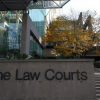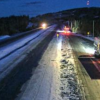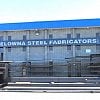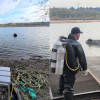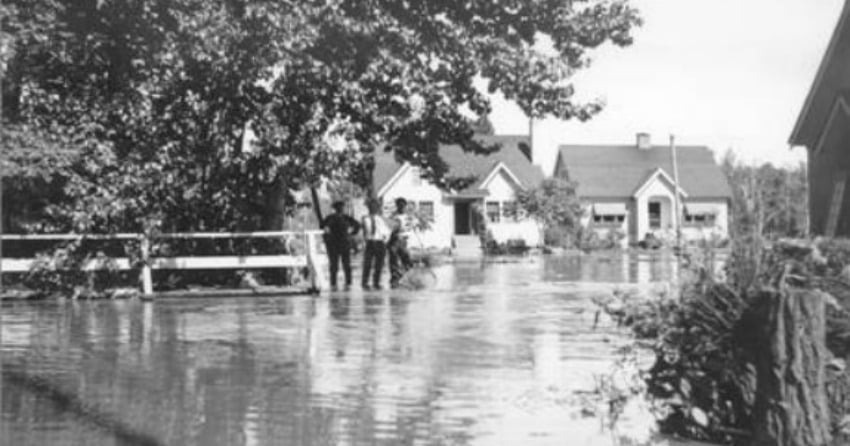
Okanagan Throwback is an exciting new history-based series.
In the Okanagan Throwback series, expect to learn about prominent locations, businesses, families, early settlers and the odd court case that went down in the valley.
Following Okanagan Throwback: Part I of the 1948 Flood
On June 17, 1948 the local paper showed lake levels at 104.6 feet, an increase of two inches since Monday.
Remembering that the "agreed maximum" was 102.5 feet, the analysts and flood experts of that day were scrambling to keep up, much like today.
The main reason for the two-inch increase in June was because of heavy rain fall.
According to the paper, more families were forced to evacuate their homes in the Okanagan Mission.
On top of that, officials were saying the lake would rise another three to five inches.
On June 17, 1948, the Kelowna Courier reported the surpassing of the 1942 peak level of 104.12 and the 1928 lake level of 104.5 feet.

On top of that, the S.M. Simpson Mill was close to getting flooded. If the water continued to rise, an official said the mill would be forced to close, affecting 500 workers.
By June 24th, the front page of the Kelowna Courier was littered with pictures showing the thousands of dollars of damage done to homes in Kelowna.
The photographs were reported being taken eight hours after "the murky waters of Lake Okanagan surrounded homes in the vicinity of Vim-Beach Avenues."
Homes on Marshall Street, Manhattan Beach, Sutherland Avenue and other areas were flooded, along with the Simpson Mill.
W. Beaver-Jones, editor of the Courier, is shown walking through the river (almost up to his knees in water) outside Peter Murdoch's home at 197 Vimy Avenue. The water was said to be more than a foot deep in places. The paper reported "Damage to the property will run into hundreds of dollars."

An extensive line of sandbags were stacked along Strathcona Avenue by the members of the Gyro Club.
The club banded together to prevent the home of Dr. and Mrs Walter Anderson from getting flooded.
By Monday June 28th, the paper reported a one-inch increase since last Thursday, reaching a level of 104.82 feet. The good news was that the levels hadn't risen in the past 48 hours.
The Kelowna Courier reported that the B.C. Minister of Lands and Mines was touring the flooded areas to assess the damage and distribute aid to people whose homes were damaged by the floods.
"Rehabilitation of individuals who have suffered directly as a result of the floods, rests with the provincial and federal governments and Premier Byron Johnson has called a special session for July 7th to deal with the matter, officials of the emergency flood committee stated today."
According to the Kelowna Courier, residents were told by George Meckling, city engineer, that Kelowna was hit harder than any other town in the southern Okanagan.
"He is prepared to recommend the maximum amount of water be let through the Penticton dam without damaging the Oliver irrigation syphon," reported the Kelowna Courier.

On July 1st, 1948, the lake level had decreased by half an inch between Monday and last Thursday.
It was the first time the lake had started receding since the flood started, three months earlier.
This certainly gave reason for residents of Kelowna to celebrate.

Just seven days later, it was announced that the Province would be spending $5 million on reconstruction and rehabilitation of the flooded areas in B.C.
It was official, they were in the clear and people could start restoring and rebuilding their homes.
The government divvied out the amounts as it saw fit. Legislative members had their expenses paid and was reported that residents were already aware of this,
The Kootenays were given $1 million towards rehabilitation.
The Fraser Valley damages were estimated to be around $30,000.

The damages in Kelowna totalled $119,692 with 300 and 400 homes damaged. In total, the floods cost the City of Kelowna more than $20,410.
By July 19th, a resolution was put forward, demanding that action be taken to better control the Okanagan watershed.
Stay tuned for the the final part of the series, discussing plans put forward to control the Okanagan watershed.










